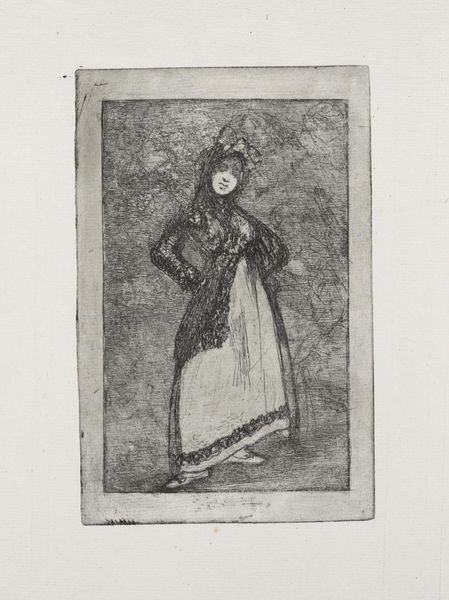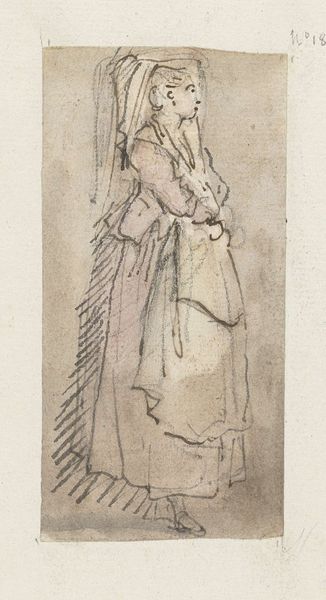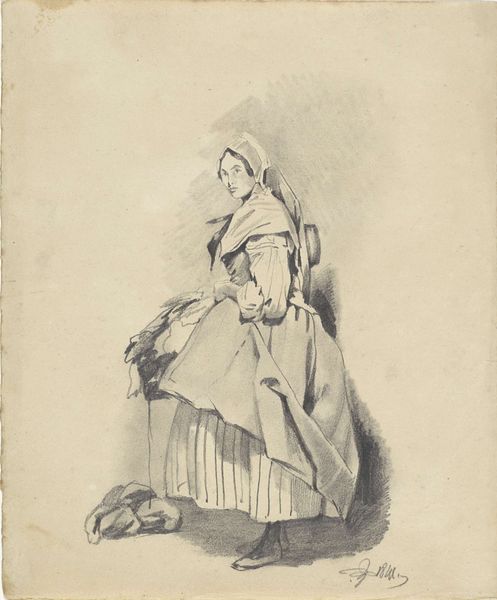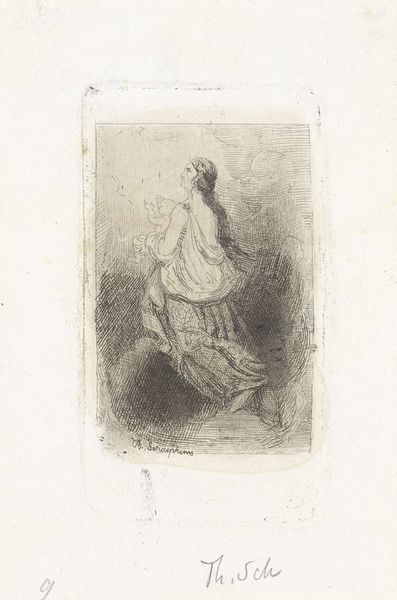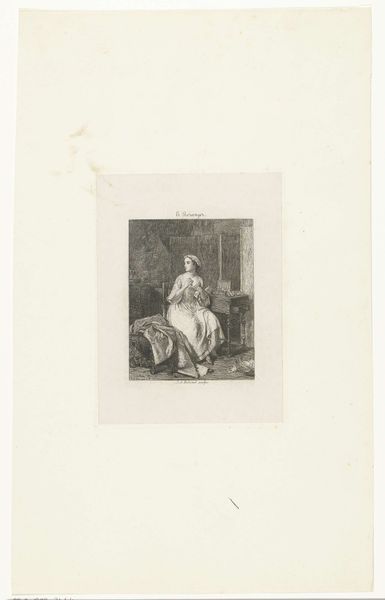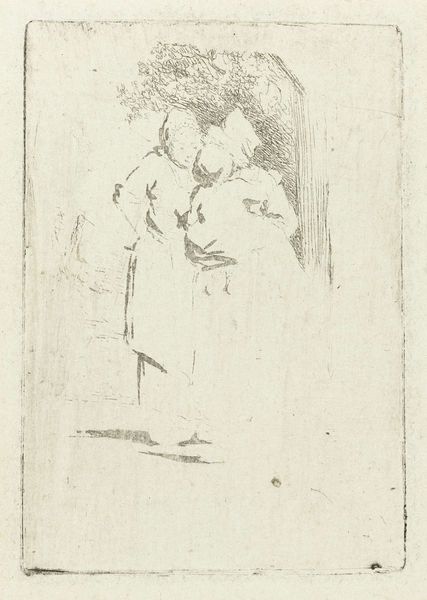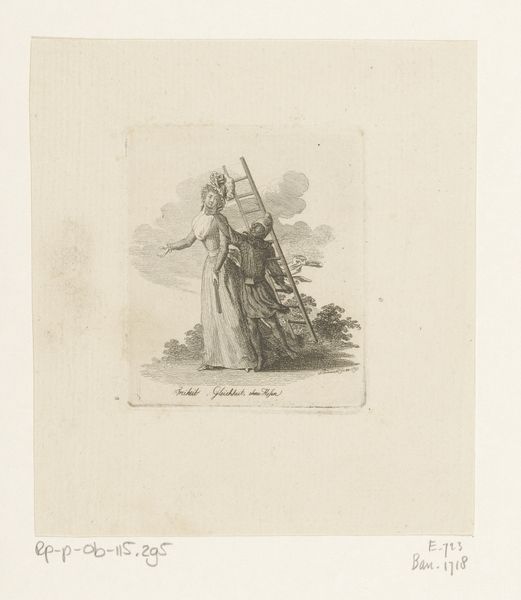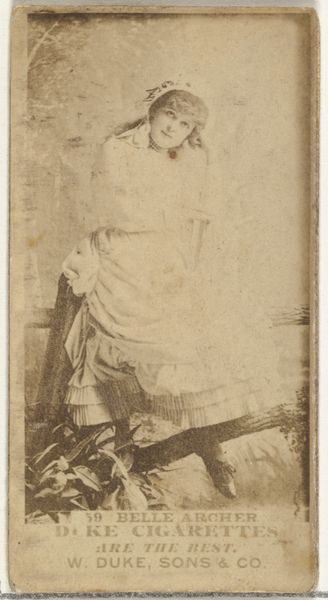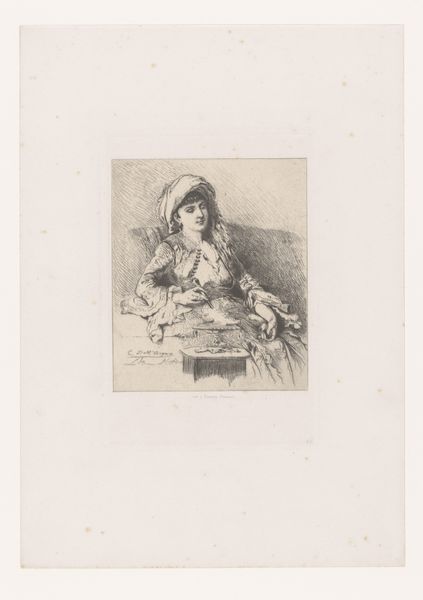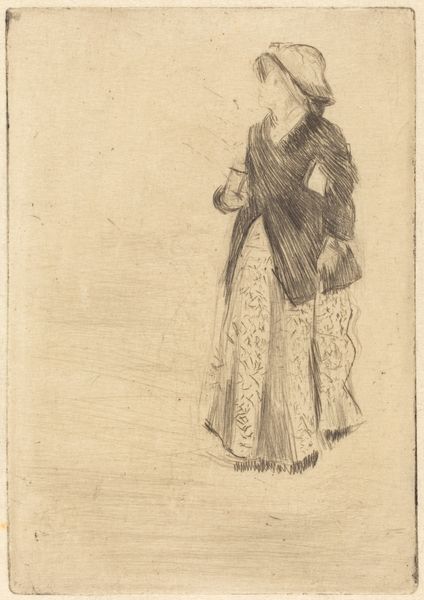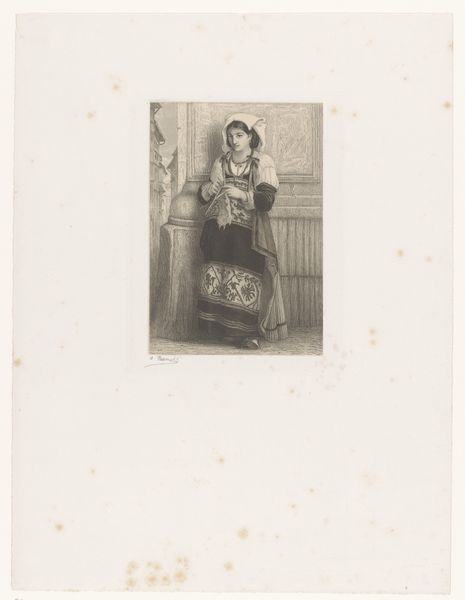
drawing, print, etching
#
drawing
#
aged paper
#
toned paper
#
light pencil work
# print
#
etching
#
book
#
form
#
line
#
genre-painting
#
realism
Dimensions: height 149 mm, width 129 mm
Copyright: Rijks Museum: Open Domain
Curator: Jacob Taanman's "Zittende vrouw met een boek op haar schoot," or "Seated Woman with a Book in her Lap," created in 1864, presents an intimate scene rendered in delicate etching and print work. It’s currently held in the Rijksmuseum. What are your immediate impressions? Editor: A quiet melancholy. The toned paper and light pencil work give it an almost ethereal quality. There is a real softness in the etching. I am interested in her story; she is looking into the space on the right with so much feeling in her expression. Curator: That pensive mood certainly speaks to the context of 19th-century women and their relationship to literacy and intellectual pursuits. What kind of access was she given, and what did that mean at this moment in time? Were books really just decoration? What was her race and socioeconomic status and how did it determine the extent to which the character had free time for something as privileged as reading? The intimate scale reinforces this air of privacy and contemplation. But who is invited to witness the scene? Editor: And who created the image to invite the viewing of that scene? Precisely. Taanman was working within specific social and institutional frameworks. He exhibited primarily within the Netherlands. The prevalence of genre painting during that period shaped his choices regarding subject matter, and, clearly, audience expectations. This work reminds us to explore not only how art represents reality but how these representations were actively constructed within a complex network of influences, tastes, and market demands. Curator: Absolutely. Looking at it through an intersectional lens, it highlights both the limited options and quiet forms of rebellion accessible to women in that era, a space where self-cultivation could offer solace and potentially subversive power. Editor: I agree. It is always worth interrogating those seeming limitations as the grounds for various opportunities in different arenas. Ultimately, I find the etching process itself revealing; the intentionality required in such a deliberate medium echoes, for me, the calculated performance of domesticity for the 19th-century woman in the image, in the world, in culture. Curator: I love the parallels you draw between technique and lived experience. This artwork clearly provides rich insights when we view it through both historical and contemporary frameworks. Editor: Indeed. Considering these layers is, after all, part of what makes engaging with art so consistently rewarding.
Comments
No comments
Be the first to comment and join the conversation on the ultimate creative platform.
